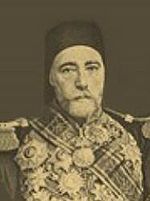- Chios Massacre
-
For the Delacroix painting, see The Massacre at Chios.
The Chios Massacre refers to the slaughter of tens of thousands of Greeks on the island of Chios by Ottoman troops during the Greek War of Independence in 1822.[1] Greeks from neighbouring islands arrived on Chios and encouraged the Chians to join the struggle for independence. In response, Ottoman troops landed on the island and slaughtered thousands. The massacre provoked international outrage, and led to an increasing support for the Greek cause worldwide.
Contents
Background
For over 2,000 years, Chios merchants and shipowners had been prominent in trade and diplomacy throughout the Black Sea, the Aegean, and the Mediterranean. The Ottoman Empire allowed Chios almost complete control over its own affairs as Chian trade and the very highly-valued mastic plant harvested only on Chios were of great value to it. The cosmopolitan Chians were also very prominent in Constantinople. Following the massacre, however, the island never regained its commercial prominence.
Historians have noted that the island's ruling classes were reluctant to join the Greek revolt, fearing the loss of their security and prosperity.[2] Furthermore, they were aware that they were situated far too close to the Turkish heartland in Asia Minor to be safe.[2] At some points, Chios is only 2 miles (3.2 km) from the Anatolian mainland.
Massacre
Georgios Stravelakis, a survivor of the Massacre of Chios, was sold into slavery.[3] He eventually became Prime Minister of Tunis, from 1837 to 1873.[4]
In March 1822, as the Greek revolt gathered strength on the mainland, several hundred armed Greeks from the neighbouring island of Samos landed in Chios. They began the fight for independence from foreign rule and started attacking the Turks, who retreated to the citadel. Many islanders also decided to join the revolution.[2] However, the vast majority of the population had by all accounts done nothing to provoke the massacre,[clarification needed] and had not joined other Greeks in their revolt against the Ottoman Empire.[5]
Reinforcements in the form of a Turkish fleet under the Kapudan Pasha Nasuhzade Ali Pasha arrived on the island on 22 March. They quickly pillaged and looted the town. On 31 March, orders were given to burn down the town, and over the next four months, an estimated 40,000 Turkish troops, including convicts,[clarification needed] arrived. In addition to setting fires, the troops were ordered to kill all infants under three years old, all males 12 years and older, and all females 40 and older, except those willing to convert to Islam.[6]
Approximately 20,000[7][8][9] Chians were killed or starved to death and 23,000 were exiled. The Greek word sfaghi (English: butchery or massacre) is commonly used to describe these events since the island itself was devastated[clarification needed] and the few survivors that dispersed throughout Europe became part of the Chian Diaspora.[clarification needed] Some young Greeks enslaved during the massacre were adopted by wealthy Ottomans and converted to Islam. Some even managed to rise to levels of prominence in the Ottoman Empire, such as Georgios Stravelakis (later renamed Mustapha Khaznadar) and İbrahim Edhem Pasha.[10]
There was outrage when the events were reported in Europe. French painter Eugène Delacroix created a painting depicting the events that occurred; his painting was named Scenes from the Massacres of Chios. In 2009, a copy of the painting was displayed in the local Byzantine museum on Chios, but was withdrawn from the museum on November 2009. While the withdrawal was meant to be a "good faith initiative" for the improvement of Greek-Turkish relations, the Greek press protested its removal.[11][12]
See also
- Tripolitsa Massacre
- Massacres during the Greek Revolution
- Ottoman wars in Europe
- List of massacres in Greece
References
- ^ Dadrian, Vahakn N. (1999). Warrant for Genocide: Key Elements of Turko-Armenian Conflict. New Brunswick: Transaction Publishers. p. 153. ISBN 1560003898.
- ^ a b c St. Clair, William (1972). That Greece Might Still Be Free, The Philhellenes in the War of Independence. London: Oxford University Press. p. 79. ISBN 0192151940.
- ^ Simon, Reeva S.; Mattar, Philip; Bulliet, Richard W. (1996). Encyclopedia of the Modern Middle East. Macmillan Reference USA. p. 1018. ISBN 0028970624.
- ^ Morsy, Magali (1984). North Africa, 1800-1900: A Survey from the Nile Valley to the Atlantic. Longman. p. 185. ISBN 0582783771.
- ^ Shupp, Paul F. (1933). "Review: Argenti, Philip P. The Massacre of Chios". Journal of Modern History 5 (3): 414. JSTOR 1875872.
- ^ "Revolution – The massacre of the island of Chios". chioshistory.gr. http://www.chioshistory.gr/en/itx/itx25.html. Retrieved 30 March 2011.
- ^ Massacre at Chios.
- ^ Christopher Long (1998-1999): The Massacres of Chios, Events & Massacres of 1822.
- ^ The Open University: Massacres of Chios - Challenging the Establishment.
- ^ Littell, Eliakim (1888). The Living Age. The Living Age Co.. p. 614. OCLC 10173561.
- ^ naftemporiki.gr
- ^ Chios Complete Guide.
Further reading
- Christopher A. Long - The Series of Events
- The Massacres of Chios Described in Contemporary Diplomatic Reports, edited and with an introduction by Philip P. Argenti (London: John Lane the Bodley Head Ltd., 1932).
Categories:- Conflicts in 1822
- Massacres in Greece
- Battles of the Greek War of Independence
- History of Chios
- 1822 in Greece
Wikimedia Foundation. 2010.


